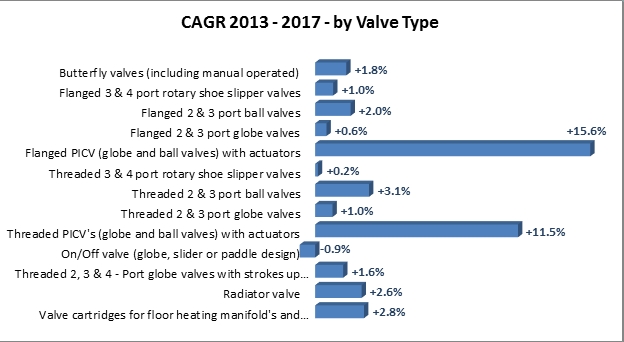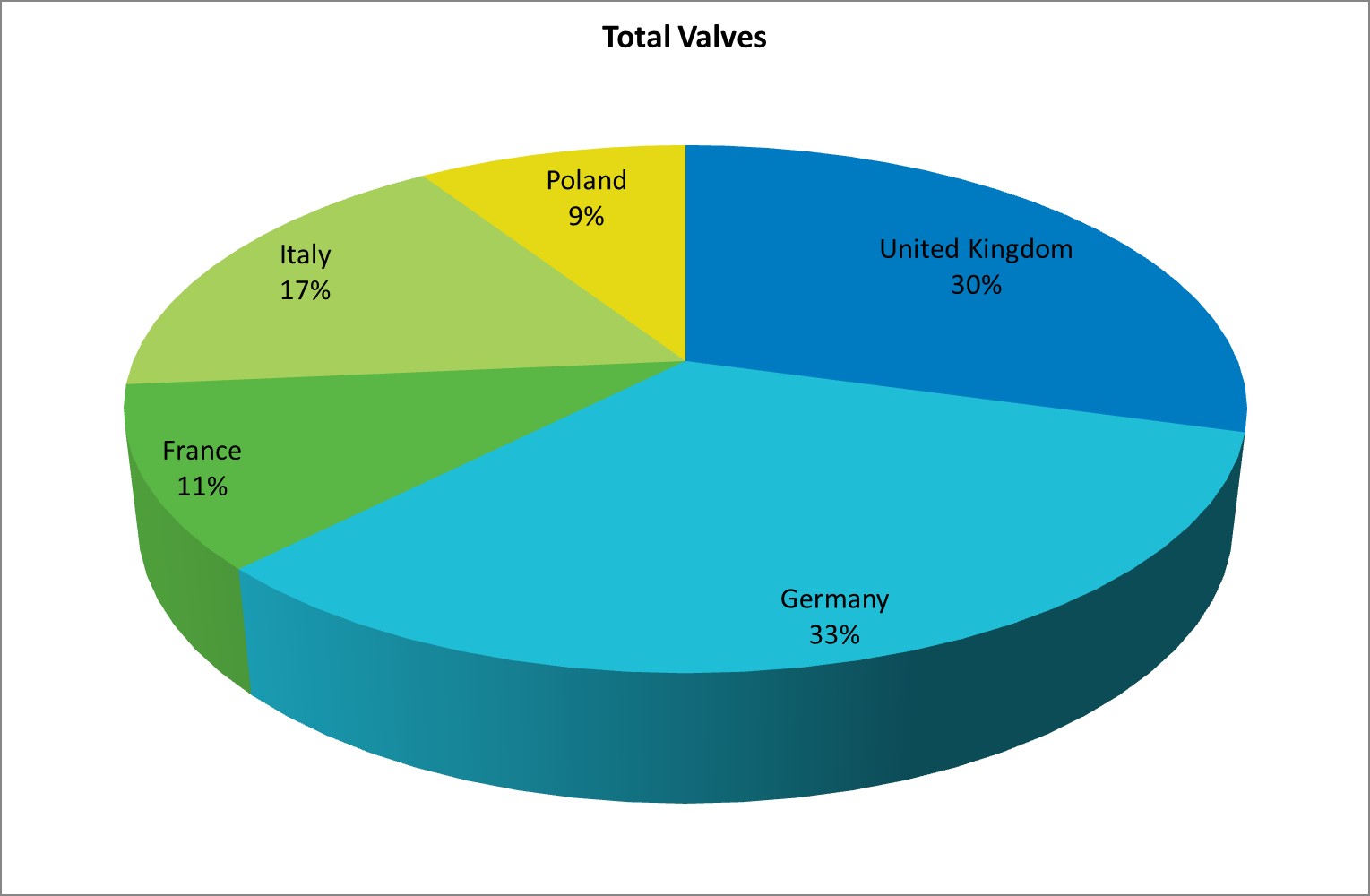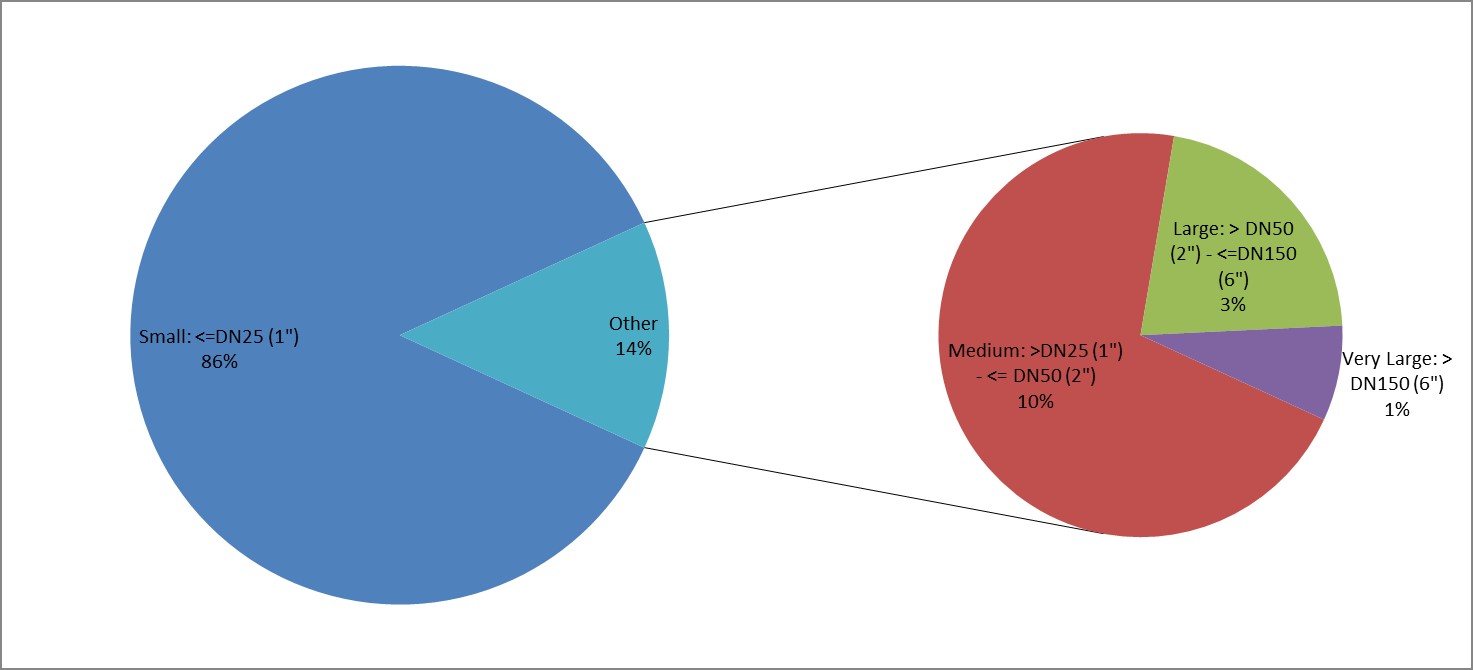European hydronic controls market
In June 2015, --BSRIA has published a report on the European Hydronic Controls market 2014 (France, Germany, Italy, Poland, and the United Kingdom). This study comprises 2 reports per country:
- The total residential & commercial buildings market.
- A detailed commercial buildings market segmentation.
These reports provide you the segmentation by:
- Thermostatic radiator, mixing, zone, safety relief, pressure reducing, manifold and pressure independent control valves (PICV).
- Threaded and flanged 2, 3 and 4 port valves.
- Globe, ball , slipper, butterfly valves by various sizes.
- Self-acting, gear, and thermal actuators.
- Thermal, electric, pneumatic linear/rotary valve actuators with/(out) spring return, by force range and control signal.
- Programmers, time switches, sensors, weather compensators and multi-zone controllers (UfH).
- (Non-)/Programmable thermostats.
- Forecasts to 2020.
The hydronic controls markets in France, Germany, Italy, Poland, and the United Kingdom are amongst the most developed in the world, collectively worth some €2bn. Germany accounts for one third of the market value of these five important country markets, closely followed by the UK. The less developed Italian market is about half as big again, whilst France, whose nuclear power infrastructure means that there is a much smaller market for hydronic controls, accounts for just over one tenth of the market. Poland, with the smallest population of the countries studied and whose market is considerably less mature is only fractionally smaller than that of France. Control valves make up the lion’s share of the market by value, followed by radiator valves but these ratios are reversed when assessed by volume of units sold. By contrast, controllers and room thermostats account for only approximately 20% of the market value.
These are the findings of a highly-detailed BSRIA study covering both residential and commercial valves, valve actuators, controllers and room thermostats, the most in-depth assessment of the hydronics market of its kind.
These products represent a very sizeable market and are an important component of the markets for residential buildings, including smart homes and of course, commercial buildings.
The rest of Europe is estimated to account for as much again, indicating a market worth in the region of €4bn across the whole of Europe.
Some 73 million valves were sold in these five markets in 2013, of which around 76% were radiator valves. Whilst growth in the radiator market remains stagnant in volume terms, manufacturers have managed to keep prices up so that the market grew moderately in value terms. Meanwhile, the demand for other types of more sophisticated control valves grew about 2.8% in volume, driven by demand for more energy saving control requirements in buildings. Prices here too, have remained strong so that the market also grew robustly in value terms.
The market in 2013 in these five countries also comprised some 1.5 million programmers and time switches, 0.6 million sensors, 0.7 million weather compensator controllers and 0.3 million multi-zone controllers as used in under-floor heating applications. In addition to this, suppliers delivered 5.4 million thermostats to the market, just over two thirds of which were non-programmable, the balance being of the programmable type.
More than 2.9 million valves were sold to the commercial sector in 2013, 86% of which were for small valves of less than or equal to DN25 (1"). The next most popular category was for medium sized valves of between DN25 (1") and DN50 (2"). Due to the replacement market, the number of actuators sold can always be expected to exceed the number of valves sold. Therefore, it is not surprising to see that around 3.9 million valve actuators for commercial applications were sold, of which 95% were linear stroke type however only about 8% incorporated spring return. A large proportion of these were Thermostatic heads and thermal / thermo-electric actuators at the lower end of the market, however beyond these, electric linear actuators accounted for around a third of all commercial actuators sold and two thirds of the market by value. The majority of these were sold with analog (modulating) control functionality.
The market for valves is forecast to grow in volume terms at 2.7% CAGR up to 2017. Pressure independent control valves (PICVs) are forecast to grow much more rapidly, almost doubling their share of the valve market by volume, from 7% in 2013 to 12% in 2018. This reflects, amongst other things, the strong impetus to improve energy-efficiency. The actuator market will grow at about 3% CAGR, experiencing stronger pull from the retrofit market and demand will be strongest for thermostatic heads and thermal / thermo-electric actuators rotary ball valve actuators.
[Figure 1 Overall Growth Rate by Valve Type]
[Figure 2 Market Size]
[Figure 3 Commercial Valve Market breakdown by value]
Featured articles and news
New Architects Code comes into effect in September 2025
ARN Architects Code of Conduct and Practice available with ongoing consultation regarding guidance.
Welsh Skills Body (Medr) launches ambitious plan
The new skills body brings together funding and regulation of tertiary education and research for the devolved nation.
Paul Gandy FCIOB announced as next CIOB President
Former Tilbury Douglas CEO takes helm.
UK Infrastructure: A 10 Year Strategy. In brief with reactions
With the National Infrastructure and Service Transformation Authority (NISTA).
Ebenezer Howard: inventor of the garden city. Book review.
The Grenfell Tower fire, eight years on
A time to pause and reflect as Dubai tower block fire reported just before anniversary.
Airtightness Topic Guide BSRIA TG 27/2025
Explaining the basics of airtightness, what it is, why it's important, when it's required and how it's carried out.
Construction contract awards hit lowest point of 2025
Plummeting for second consecutive month, intensifying concerns for housing and infrastructure goals.
Understanding Mental Health in the Built Environment 2025
Examining the state of mental health in construction, shedding light on levels of stress, anxiety and depression.
The benefits of engaging with insulation manufacturers
When considering ground floor constructions.
Lighting Industry endorses Blueprint for Electrification
The Lighting Industry Association fully supports the ECA Blueprint as a timely, urgent call to action.
BSRIA Sentinel Clerk of Works Training Case Study
Strengthening expertise to enhance service delivery with integrated cutting-edge industry knowledge.
Impact report from the Supply Chain Sustainability School
Free sustainability skills, training and support delivered to thousands of UK companies to help cut carbon.
The Building Safety Forum at the Installershow 2025
With speakers confirmed for 24 June as part of Building Safety Week.
The UK’s largest air pollution campaign.
Future Homes Standard, now includes solar, but what else?
Will the new standard, due to in the Autumn, go far enough in terms of performance ?
BSRIA Briefing: Cleaner Air, Better tomorrow
A look back at issues relating to inside and outside air quality, discussed during the BSRIA briefing in 2023.
Restoring Abbotsford's hothouse
Bringing the writer Walter Scott's garden to life.
Reflections on the spending review with CIAT.




























